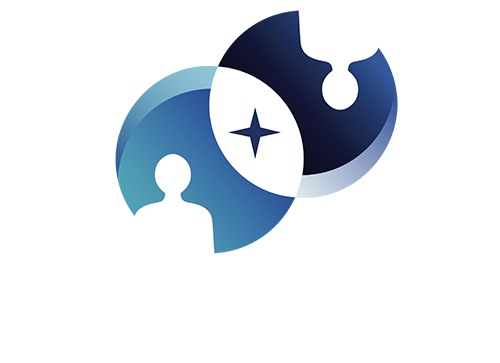Bed rest study “Centrifuge” (2010)
Date :
2010
State of progress :
Ended
Objectives :
Study of the effects of spaceflight on the human body
Evaluation of artificial gravity as a countermeasure
Partners :
ESA, CNES, MEDES
In 2009-2010, MEDES carried out a bed rest study aimed at evaluating artificial gravity, created by a short arm centrifuge, to prevent the effects of weightlessness, simulated by anti-orthostatic bed rest.
The evaluation involved two centrifugation protocols used as a counter-measure to prevent the deterioration brought about in healthy men by 5 days’ anti-orthostatic bed rest.
It was an ESA-CNES study.
This study was made possible by the installation of a short-arm centrifuge on the Space Clinic’s premises in 2007.
Context
One of the aims of the current space programmes is to prepare for future manned interplanetary missions, which may last for up to 3 years (as, for example, to Mars). Exposure to the space environment and particularly weightlessness for such periods leads to physiological changes that involve the cardio-vascular, muscle, bone and neuro-sensory systems.
Preventive means, also known as “counter-measures”, are used to combat these deleterious effects of exposure to the space environment and to prepare the astronauts for their return to Earth. The current counter-measures are mostly based on physical exercise (treadmill, bicycle-ergometer) or Lower Body Negative Pressure (or LBNP, a box in which negative pressure is applied to the lower body). They had been tested in previous bed rest studies carried out at the Space Clinic.
Today, these counter-measures are used by the permanent crews of the International Space Station (ISS) who stay on board for up to 180 days. However, they are only partially effective, probably because they only involve one physiological system at a time (muscles and possibly bones for the exercise, cardio-vascular system for LBNP, etc.).
Artificial gravity therefore offers a more global approach to the counter-measures issue as it simply simulates the Earth’s gravitational environment and therefore has repercussions for all our physiological systems.
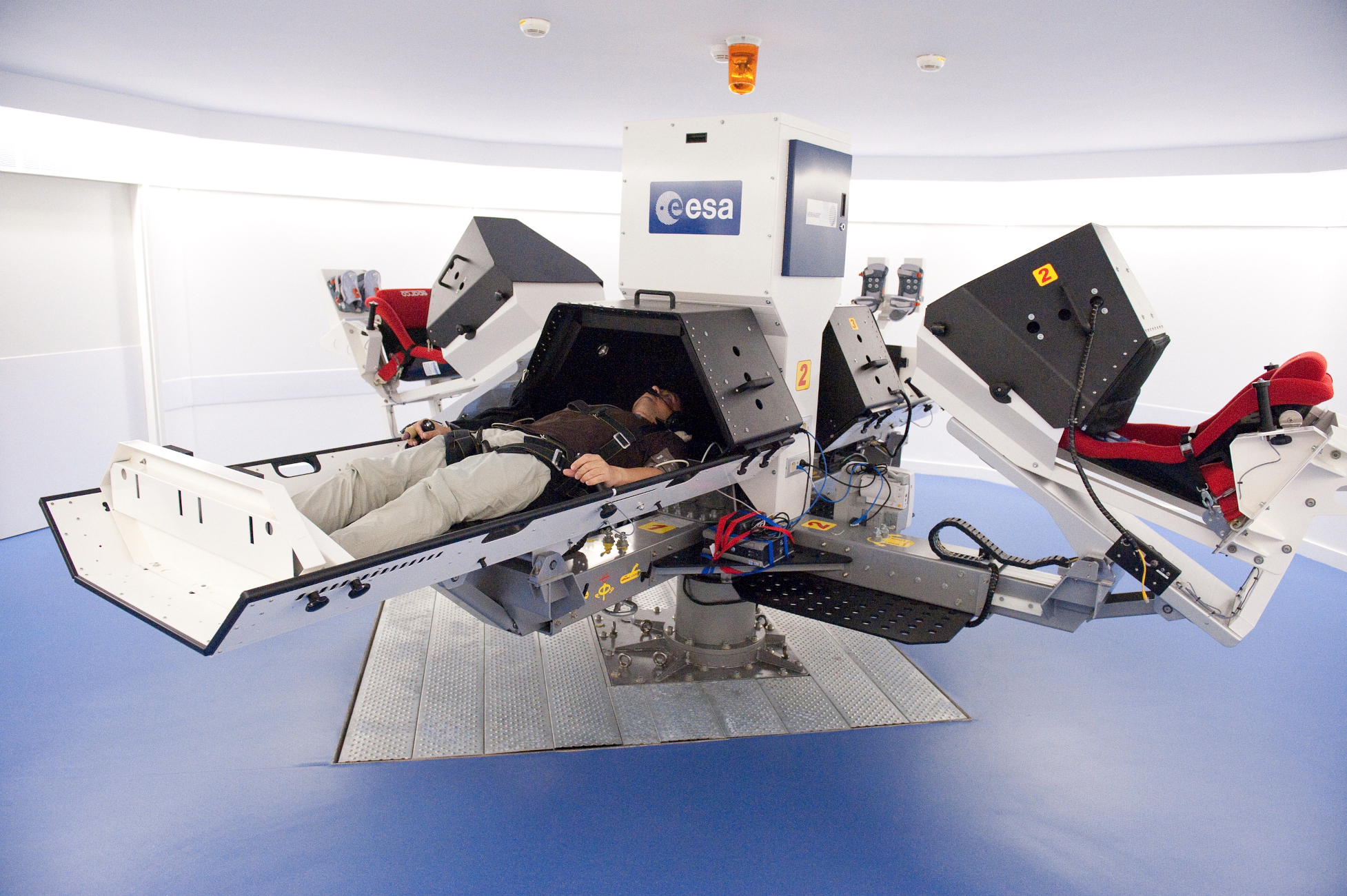
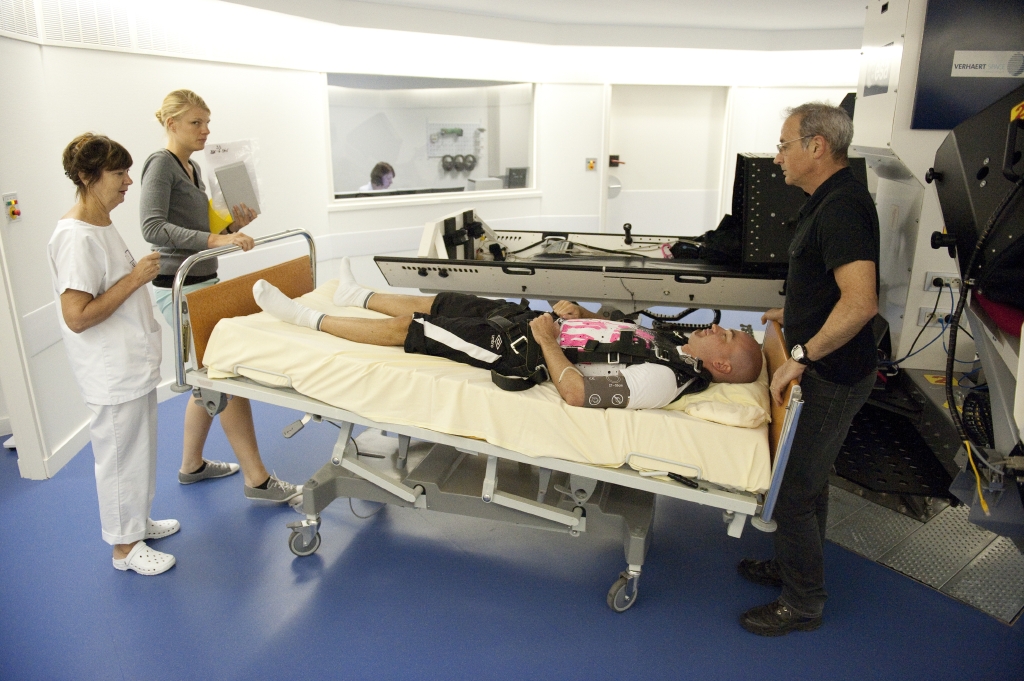
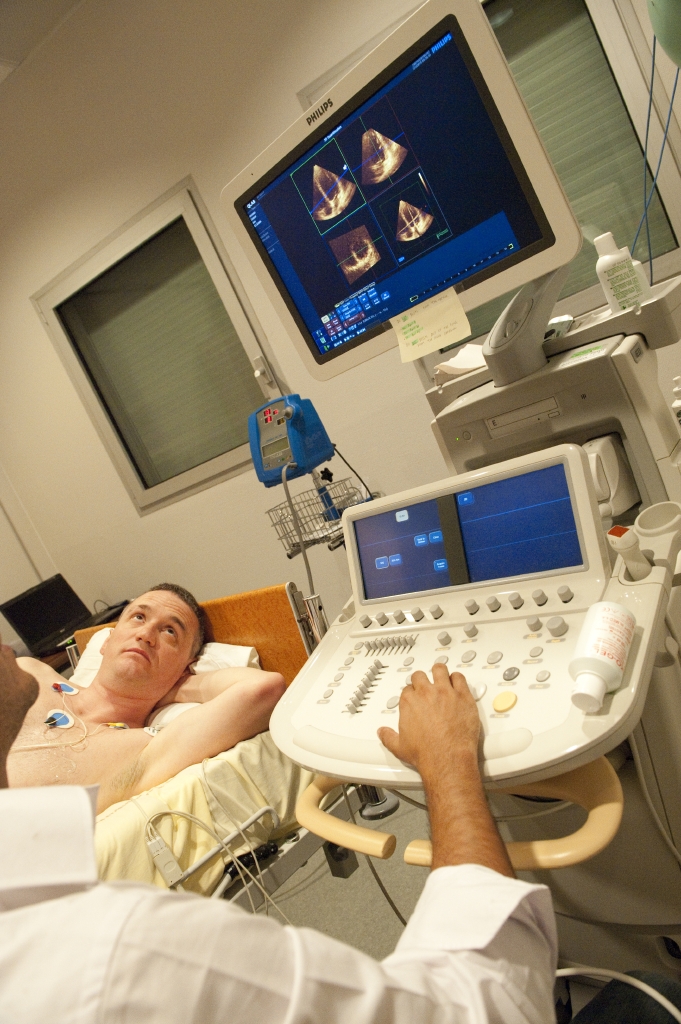
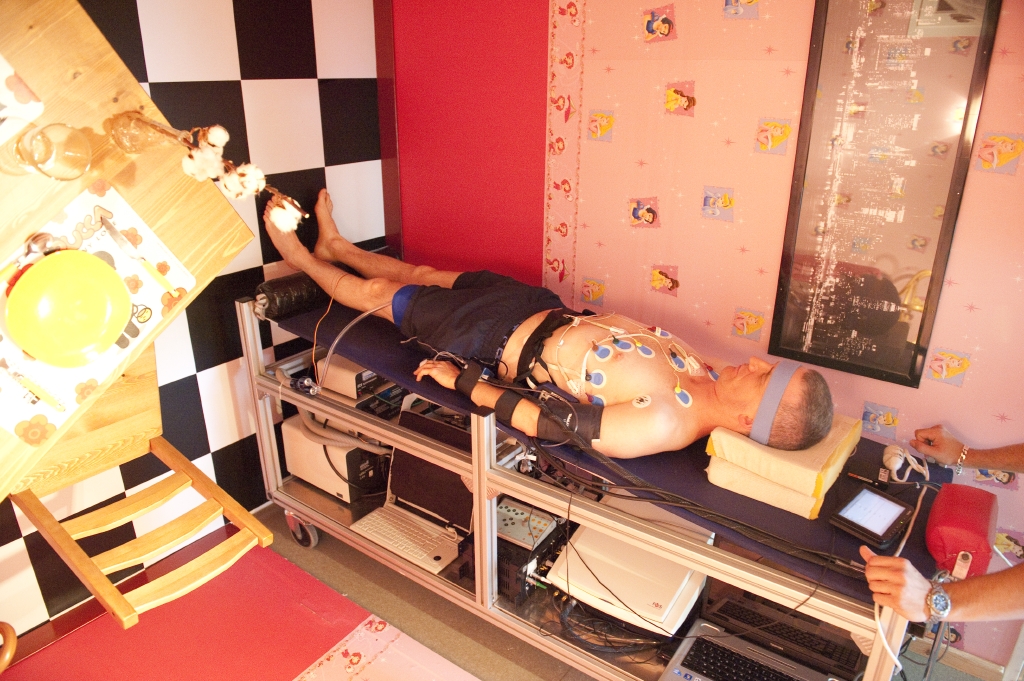
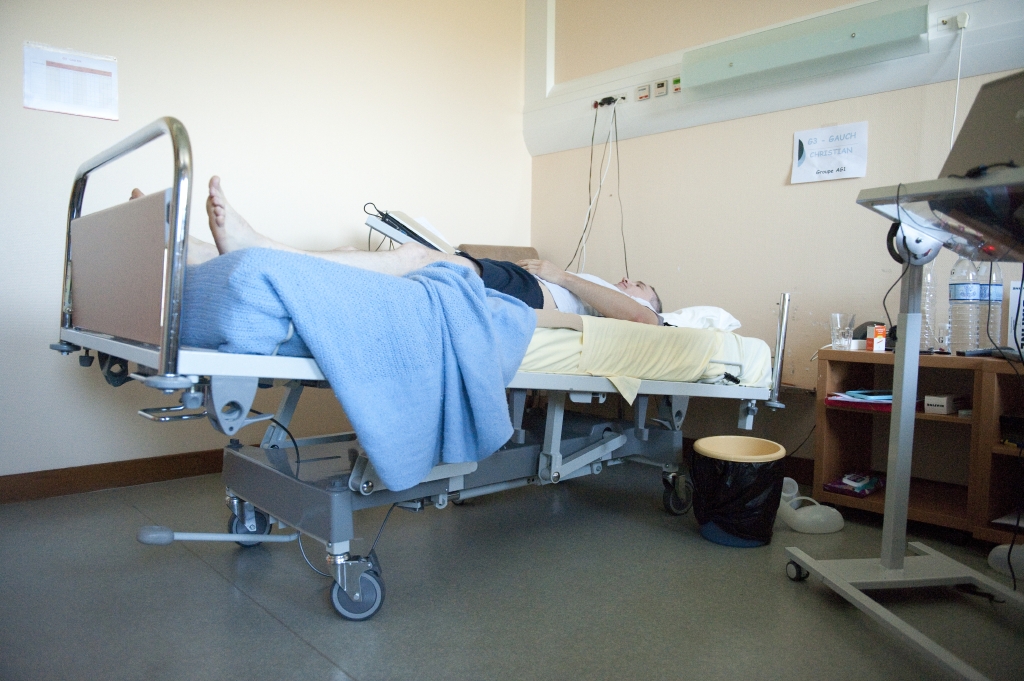
How to study was organised ?
12 male volunteers, divided into 3 groups, took part in the study, which took place in the Space Clinic (MEDES) over three 2-week hospitalisation periods at 4 to 5-week intervals.
Each 2-week hospitalisation period included:
- A 5-day ambulatory control period,
- A 5-day period of anti-orthostatic bed rest (-6°),
- A 5-day ambulatory recovery period
The 12 volunteers were divided into 3 groups as follows:
- “Continuous centrifugation” group (4 volunteers),
- “Intermittent centrifugation” group (4 volunteers),
- “Control” group (4 volunteers).
Each of the volunteers changed groups during each period of hospitalisation and was therefore his or her own control subject.
Countermeasure protocols
Description of the groups :
- Continuous centrifugation group: Each day of bed rest, the volunteers were subjected to a 1g acceleration de 1g around their centre of gravity (pelvis) for 30 minutes in a reclining position.
- Intermittent centrifugation group: Each day of bed rest, the volunteers were subjected to a 1g acceleration de 1g around their centre of gravity for 5 minutes in a reclining position. The centrifuge was then stopped for a few seconds and a new 5-minute phase identical to the previous one began. 6 5-minute phases were thus completed.
- Control group: this group acted as a control for the experiment. The subjects in this group did not undergo a centrifugation session, but was used as a comparison to evaluate the effect of the 2 types of “counter-measures” on each of the volunteers.
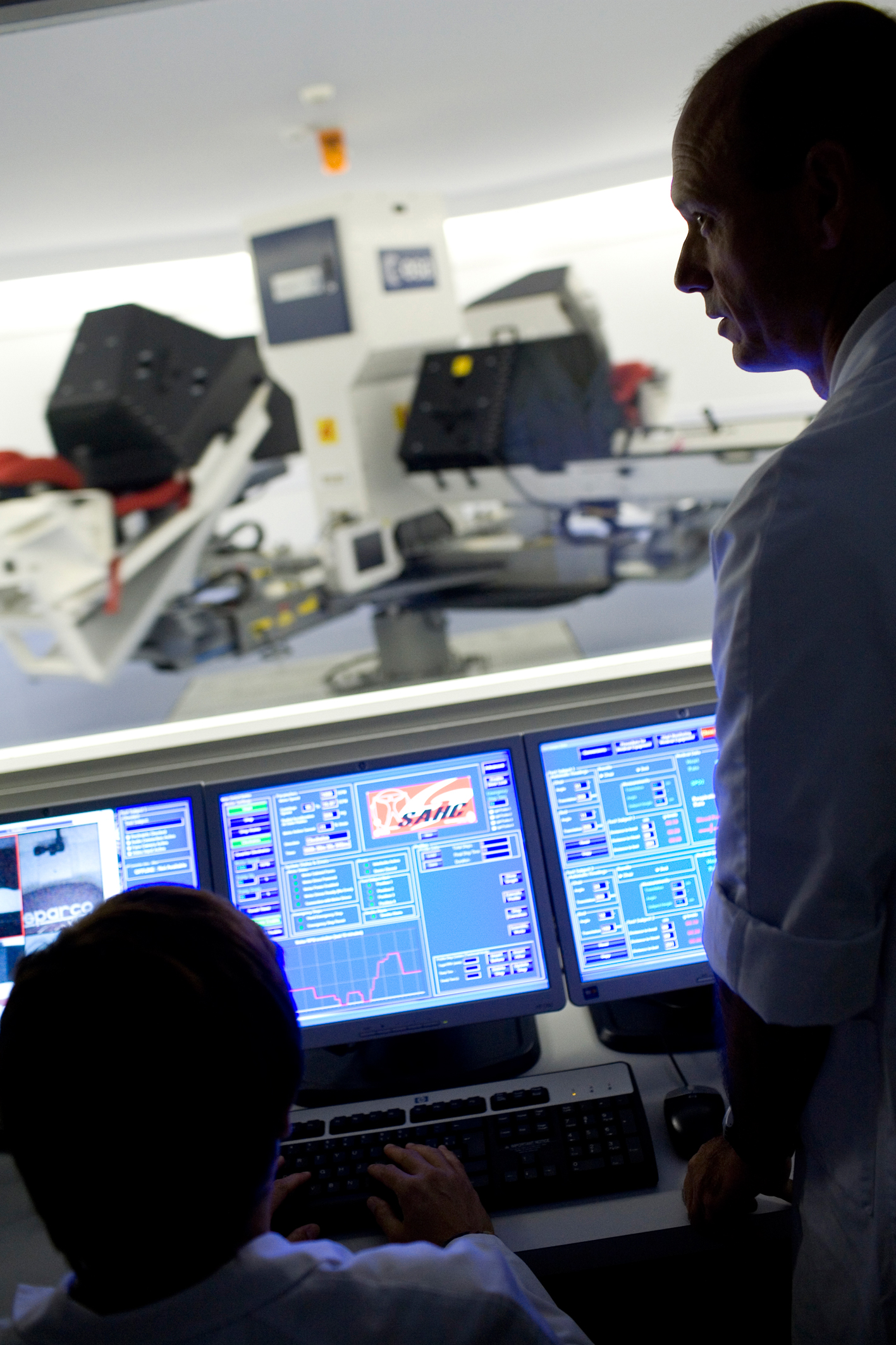

Nos actualités
Nos projets
Une question ?
Devenir volontaire ?
Nos études cliniques
Urgent ! Recrutement volontaires
